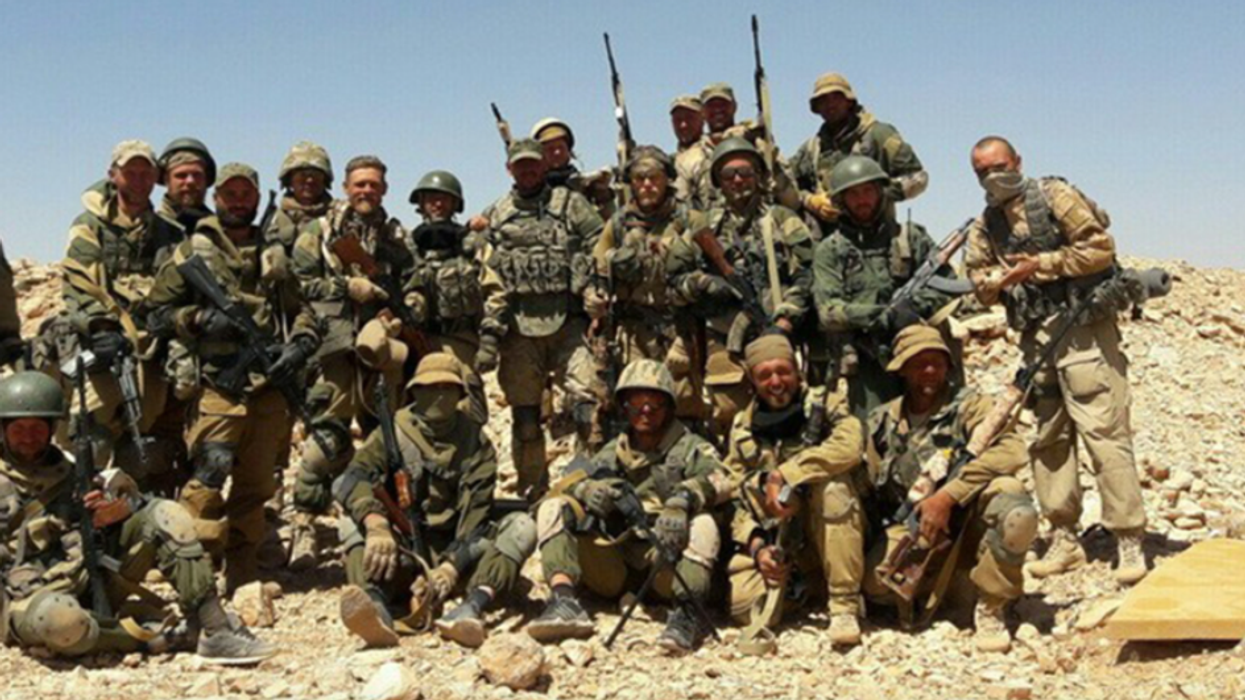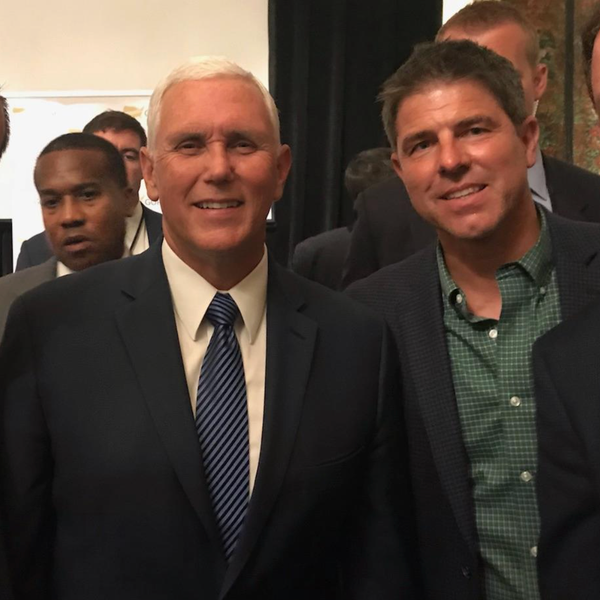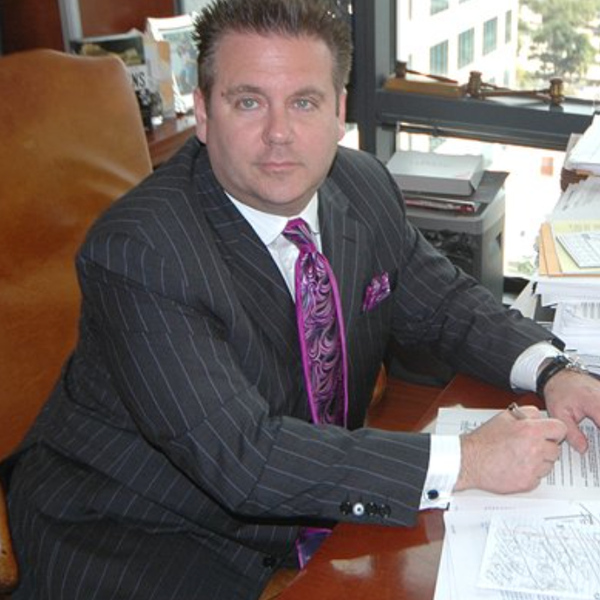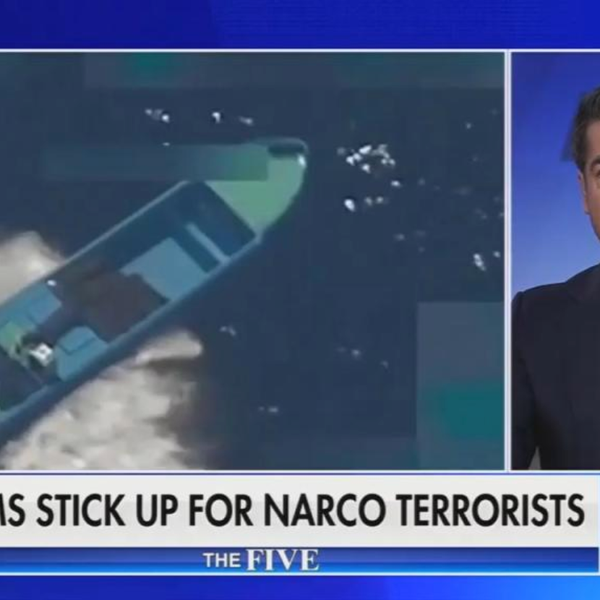Neofascists In Russia’s Invading Army Expose Putin’s ‘Denazify’ Propaganda

Russian mercenaries in Syria
One of Vladimir Putin’s primary propaganda points when rationalizing his assault on Ukraine as a “denazification” program is to trot out as proof of his claims the Azov Battalion, the Ukrainian fighting unit founded by neo-Nazi nationalists and still reportedly dominated by them. In doing so, he has effectively obfuscated the reality that Russian forces are even more riddled with fascist elements—including forces currently leading their fight in the Donbas region of southeastern Ukraine.
The largest of these is the Russian Imperialist Movement (RIM), a white supremacist paramilitary organization listed by American authorities as a terrorist body, and the Wagner Group, a private military proxy closely linked to Putin with a history of neo-Nazi activity. Russian troops arriving in Donbas have been recorded flying the RIM flag—a combination of historical Russian flags from its imperial era—while Wagner Group’s mercenaries have been sighted in Donetsk and elsewhere; notably, German intelligence has connected them to the atrocities in the Kyiv suburb of Bucha.
Social-media videos out of the Rostov Oblast have shown Russian troop convoys heading toward the Donbas region with soldiers bearing the RIM flag and other imperialist banners. The same flag flies at RIM marches, where the rhetoric is thick with bigotry directed at Jews and Ukrainians. Denis Valliullovich Gariev, the militant leader of RIM who was one of three RIM leaders sanctioned by the United States, was quoted as saying, “We [RIM] see Ukrainian-ness as rabies … either quarantine or liquidation, or he’ll infect everyone.”
The same flag was seen in mid-March flying with Moscow-backed separatist troops in Donetsk on a Telegram post shared by a pro-Putin channel. Much of the far-right content on these Telegram channels—as well as the Russian social-media platform VKontakte (VK)—is related to a neo-Nazi unit called Rusich that is part of Wagner Group, some of it bearing the Wagner name and logo.
Pentagon authorities estimate that about 1,000 Wagner mercenaries have been deployed in eastern Ukraine, where Russia has refocused its current war effort. Rusich militiamen have been spotted on the Russian-Ukrainian border where the offensive is being launched.
Russian officials deny having any connection to the Wagner Group, which does not officially exist. An incredibly secretive organization, its true ownership and funding sources remain unclear. But experts say it has served as a tactical tool for the Kremlin in hot spots where Russia has political and financial interests, and has deep ties to Putin—in fact, it is widely considered his private army.
Putin is reported to have ordered Wagner Group operatives into Kyiv to assassinate Ukrainian President Volodymyr Zelenskyy, who has reportedly survived about a dozen such attempts. About 400 Wagner mercenaries were reported to have entered the Kyiv area from Belarus, and were offered “hefty bonuses” for killing key political and media figures, including the mayor of Kyiv, Zelensky, and his entire Cabinet.
According to German intelligence officials, Wagner Group operatives were primarily responsible for spearheading the butchery that has been reported and substantiated in Bucha. Der Spiegel reported that comments from troops intercepted by German intelligence—including flippant remarks about shooting men on bicycles, and orders to first interrogate soldiers and then shoot them—that demonstrate the atrocities in Bucha "were neither random acts nor the product of individual soldiers who got out of hand."
The Wagner Group mostly comprises retired regular Russian servicemen, typically aged between 35 and 55. The Kremlin has effectively used their mercenaries to wage deniable war and otherwise prop up its interests in places like Syria, Libya, Mozambique, and more recently in the Central African Republic and Mali. They also played a key role in Putin’s long war on Ukraine, with its fighters helping him illegally annex Crimea in 2014.
The group’s founder, Dmitry Utkin, named it after Hitler’s favorite composer, Richard Wagner, and is himself fond of fascist symbols; he has a Nazi eagle, along with swastikas and SS lightning bolts, tattooed on his torso. Reportedly Wagner mercenaries have left behind neo-Nazi propaganda in combat zones, including graffiti with hate symbols.
The Wagner militia unit Rusich has been spotted in southeastern Ukraine as well. It was founded nearly a decade ago in St. Petersburg by a Red Army paratrooper named Aleksei Milchakov and Yan Petrovskiy, a Norwegian neo-Nazi, after the pair met at a white supremacist RIM event.
Milchakov has previously posted horrifying pictures of himself on social media slicing off the ears of dead soldiers, as well as selfies in which he is carving the kolovrat, a Slavic far-right version of the swastika. He also has boasted about being a neo-Nazi and claims he "got high from the smell of burning human flesh."
Rusich is believed to consist of several hundred soldiers, and their signature uniform patch is a white supremacist valknut insignia. Its idea of humor on social media is a cartoon of a Russian soldier returning home with gifts for his family, stolen from Ukrainians and covered in blood. Its caption reads: “If you are a real man and a Russian, join our ranks. You will spill liters of blood from vile Russophobes, and become rich and cool."
One of Wagner’s key functions, according to the Soufan Center, a New York-based nonprofit think tank, is that it provides the Kremlin with “a thin veneer of plausible deniability as it engages in the pursuit of finance, influence, and vigilantism not in keeping with international norms.”
The Daily Beast reported in late January that dozens of Wagner mercenaries were pulled from the Central African Republic to join Russian forces massing at the Ukraine border.
The Ukraine war has a broad mix of mercenaries and extremists from all sides participating in both sides of the conflict, as a report from the Soufan Center explores in detail. As the war drags on, active online recruitment suggests that a drawn-out conflict could attract many more volunteer fighters, according to Stephan J. Kramer, the head of the domestic intelligence agency in the German state of Thuringia. An eagerness to take up arms, he noted, reflects the motivations of right-wing extremists, including within the ranks of the German military.
For neo-Nazis and white supremacists, “Ukraine could become their version of what Afghanistan was for the jihadi movement in the 1980s,” said Steven Stalinsky, the executive director of the Washington-based Middle East Media Research Institute. “Being on the ground in a real-world fighting situation will allow them to gain valuable experience, as they further hone their skills in weapons, planning attacks, using technology in war including communications and encryption, and using cryptocurrency for clandestine funding of their activity.”
Outfits like Rusich are the spear tip of a much larger neofascist element within Russia, embodied by the Russian Imperial Movement. Its ideology is much more than simply nostalgia for the Russia of two centuries ago; concerned with fighting against globalization, multiculturalism, and liberalism, RIM is part and parcel of a broader international white supremacist project, which also enjoys Putin’s sponsorship and support. Its “membership is rigid and adheres to the dualistic beliefs that members should be part of the Russian Orthodox Church and conform to the group’s view of the necessity of creating a Russian Imperial state,” according to the Soufan Center.
RIM’s activism now includes running a kind of international “summer camp” for young right-wing extremists called Partisan, a paramilitary training course it sponsors near St. Petersburg. It claims to train civilians for upcoming “global chaos.” It draws participants from around Europe.
Two of its graduates from Sweden, both members of the neo-Nazi group Nordic Resistance, returned home to Gothenburg and attempted to blow up a home for asylum seekers, as well as a gathering of leftists at an alternative bookstore. (Another bomb was accidentally ignited by a garbage worker who was permanently maimed in the blast.) They likely learned how to construct the bombs at Partisan.
Jonathan Leman, a researcher for the anti-racist pressure group EXPO, explains that the training reflects a tactical shift of consciousness within European neo-Nazi movements like Nordic Resistance that occurred over the course of the Ukraine crisis.
“As the role of the EU and the United States in the war becomes more apparent,” he told us, “you could see that pro-Kremlin propaganda was having a greater impact on far right websites in Sweden.”
The focus of Partisan, its website says, is to prepare civilians for “the collapse of civilization.” RIM’s leader, Stanislav Vorobyov, turned up in uniform at a summit organized by Nordic Resistance in 2015 and warned about “a full-scale war against the traditional values of Western civilization.” He told them his uniform should be regarded as a symbol of their joint fight against the “Jewish oligarchs in Ukraine.”
While the RIM has a long and well-publicized record of sponsoring far-right activities throughout Europe, its presence in North America has been limited. Matthew Heimbach, former leader of the neo-Nazi Traditional Workers Party (TWP), at one time hosted a RIM leader and visited with him at historic sites in Washington, D.C., and Gettysburg, Pennsylvania.
Heimbach continued to cultivate those ties, traveling to Russia to return the favor by meeting with RIM leaders at their annual gathering, the World National Conservative Movement conference. “I see Russia as kind of the axis for nationalists,” said Heimbach. “And that’s not just nationalists that are white—that’s all nationalists.”
A neo-Nazi organization that recruited members online, The Base, also has potential ties to Russian intelligence, and its American founder currently resides in Russia. That group also held paramilitary training sessions in the Pacific Northwest. Several members of The Base were arrested in January 2020 just prior to a planned right-wing gun rally in Richmond, Virginia, where they reportedly intended to wreak violent havoc by opening fire on police forces and civilians.
It’s true that American extremists have long been attracted to Ukraine’s Azov Battalion as an opportunity for paramilitary training. Members of the California-based Rise Above Movement participated in such training prior to their participation in the deadly and violent 2017 Unite the Right riot in Charlottesville, Virginia, for which several of them have ended up facing federal charges.
The Azov Battalion formed in 2014 and later joined the country's National Guard after fighting against Russian-backed forces in eastern Ukraine. Experts estimate nationalists comprise about 2 percent of Ukraine's population, with the vast majority having very little interest in anything to do with them, but the Azov group is considered to be one of the Ukrainian army’s more potent fighting forces.
Nonetheless, according to the Soufan Center, their extremism in the current context is vastly overstated. It cites experts on the European far right like Anton Shekhovtsov, who say the Azov of 2022 is nothing like the group from eight years ago, since those seeking to fight with Azov today are motivated, for the most part, by Ukrainian nationalism and not far-right extremism. However, it notes: “Despite the evolution of the movement since 2014, its brand still remains popular with far-right extremists, and its future trajectory will bear watching.”
A Washington Post report on the battalion interviewed Azov fighters and one of its founders, as well as experts who have tracked the battalion from its beginnings, and found a more complex and nuanced situation than the Kremlin’s crude characterizations. They concede that while some extremists remain in their ranks, the militia has evolved since 2014 and, under pressure from U.S. and Ukrainian authorities, has toned down its extremist elements.
“You have fighters now coming from all over the world that are energized by what Putin has done,” said Colin P. Clarke, director of research at the Soufan Group, an intelligence and security consulting firm. “And so it’s not even that they’re in favor of one ideology or another — they’re just aghast by what they’ve seen the Russians doing.
“That certainly wasn’t the same in 2014,” he added. “So while the far-right element is still a factor, I think it’s a much smaller part of the overall whole. It’s been diluted, in some respects.”
A recent article in RIA Novosti, the Russian state-owned domestic news agency, titled "What Russia Should Do with Ukraine," reveals the shallow rhetorical ruse of Putin’s claims. It author, Russian political consultant Timofey Sergeytsev, openly admits that "denazification” has nothing to do with eradicating any far-right ideology, but is simply a euphemism for "de-Ukrainization"—the annihilation of Ukraine as a nation-state and a cultural entity.
Putin has argued since at least last year that Ukraine’s very existence is “anti-Russia.” Sergeytsev follows the logic: Ukrainian national identity, he says, is "an artificial anti-Russian construct that has no civilizational content of its own"; it is a "subordinate element of a foreign and alien civilization." In a culture long accustomed to considering Nazism anti-Russian, Ukraine is easily translated into “Nazi.”
Adam Hadley, the executive director of Tech Against Terrorism, a London-based counterterrorism initiative, said their analysis indicated that Russian-backed forces in Ukraine, including the Wagner Group, are “almost certainly connected with extreme far-right organizations.”
Hadley added: “Given Putin’s absurd demands for the ‘denazification’ of Ukraine, we suggest he should first root out neo-Nazis in his own ranks before pointing the finger at others.”
Published with permission from DailyKos
- Ukrainian Woman Offered Sunflower Seeds To Russian Soldier ... ›
- Authoritarianism - National Memo ›
- Neo-Nazi Atomwaffen Group Loses Platforms - National Memo ›
- Vladimir Putin Should 'Denazify' Himself - National Memo ›
- Zelensky: 'Battle Of Donbas' Has Begun With Blasts All Along Eastern Front - National Memo ›








